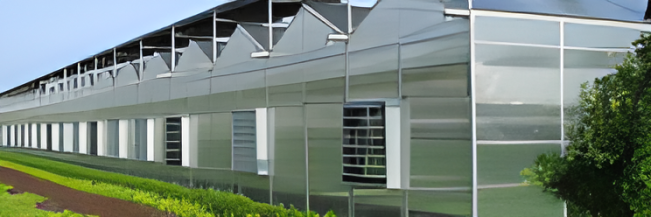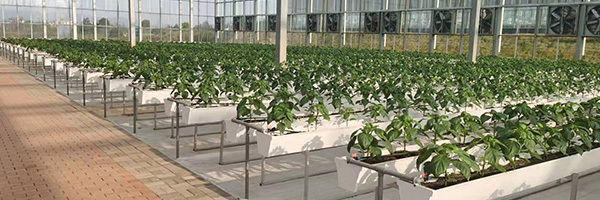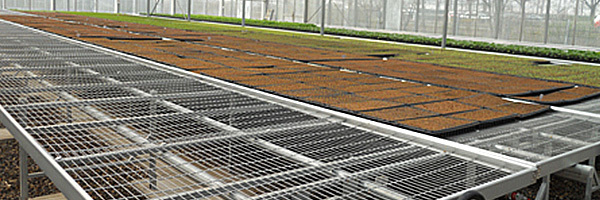-
-
Company Profile
-

Greenhouse Structures

-
Polycarbonate sheet greenhouse
-
Glass greenhouses
-
Multi-Span film greenhouse
-
Tunnel greenhouse
-
Sightseeing greenhouse
-
Double-film frame solar greenhouses
-
Glass and polycarbonate sheet greenhouses
-
Glass greenhouses structures suitable for planting
-
Glass Greenhouse for Scientific Research
View More -
-

-

Enhancing Scientific Research with Glass Greenhouses
Release time:
2025-11-08
In recent years, glass greenhouses have become indispensable tools in the realm of scientific research. These structures offer an optimal environment for studying plant biology, ecology, and various agricultural practices. One of the primary advantages of a glass greenhouse for scientific research is the ability to create and maintain controlled conditions that are crucial for experimental accurac
 In recent years, glass greenhouses have become indispensable tools in the realm of scientific research. These structures offer an optimal environment for studying plant biology, ecology, and various agricultural practices. One of the primary advantages of a glass greenhouse for scientific research is the ability to create and maintain controlled conditions that are crucial for experimental accuracy. Researchers can manipulate variables such as temperature, humidity, light intensity, and CO2 levels, allowing for precise examinations of plant responses and growth patterns.
In recent years, glass greenhouses have become indispensable tools in the realm of scientific research. These structures offer an optimal environment for studying plant biology, ecology, and various agricultural practices. One of the primary advantages of a glass greenhouse for scientific research is the ability to create and maintain controlled conditions that are crucial for experimental accuracy. Researchers can manipulate variables such as temperature, humidity, light intensity, and CO2 levels, allowing for precise examinations of plant responses and growth patterns.
The transparency of glass allows for maximum sunlight penetration, which is vital for photosynthesis. This feature not only supports plant growth but also provides researchers with the ability to observe and analyze plant behavior under natural light conditions. Additionally, the durability of glass ensures that these greenhouses can withstand various weather conditions, making them suitable for long-term studies.
Another significant benefit of glass greenhouses in scientific research is their insulation properties. Modern glass technologies, including double glazing and low-emissivity coatings, enhance thermal performance, reducing energy costs while maintaining a stable internal climate. This aspect is particularly important for experiments requiring specific temperature ranges, as fluctuations can compromise the integrity of research outcomes.
Moreover, glass greenhouses are versatile and can serve multiple research purposes. They can be outfitted with advanced monitoring systems and automation technologies that track environmental variables in real time. This integration allows researchers to gather data continuously, enabling more accurate and reproducible results. The flexibility in design also means that greenhouses can be tailored to specific research needs, accommodating everything from small-scale experiments to large-scale trials.
Collaboration is another key aspect where glass greenhouses excel. These structures can serve as collaborative spaces for researchers from various disciplines, fostering innovation and interdisciplinary research. By providing a shared resource, glass greenhouses promote knowledge exchange and joint projects, ultimately accelerating scientific advancement.
In conclusion, glass greenhouses are crucial for scientific research, offering controlled environments that enhance the accuracy and reliability of experiments. Their ability to facilitate collaboration, along with their energy-efficient designs and adaptability, makes them an invaluable asset in various research fields. As the demand for sustainable practices and advanced research continues to grow, the role of glass greenhouses is likely to expand, driving new discoveries and innovations in the scientific community.Keyword:
Related News
Enhancing Scientific Research with Glass Greenhouses
In recent years, glass greenhouses have become indispensable tools in the realm of scientific research. These structures offer an optimal environment for studying plant biology, ecology, and various agricultural practices. One of the primary advantages of a glass greenhouse for scientific research is the ability to create and maintain controlled conditions that are crucial for experimental accurac
2025-11-08
Exploring the Versatility of Glass Greenhouses in Different Climates
Exploring the Versatility of Glass Greenhouses in Different Climates Table of Contents 1. Introduction to Glass Greenhouses 2. Advantages of Using Glass Greenhouses 3. Climate Adaptability of Glass Greenhouses 3.1 Glass Greenhouses in Tropical Climates 3.2 Glass Greenhouses in Temperate Climates 3.3 Glass Greenhouses in Cold Climates
2025-11-03
Exploring the Benefits of Glass and Polycarbonate Sheet Greenhouses in Modern Agriculture
When it comes to greenhouse construction, glass and polycarbonate sheets are two of the most popular materials due to their unique properties and benefits. Both materials offer excellent light transmission, which is vital for photosynthesis and plant health. Glass greenhouses, in particular, are known for their superior clarity and aesthetic appeal. They allow up to 90% of sunlight to penetrate, c
2025-10-29
Choosing the Right Glass Type for Your Greenhouse Roof: A Comprehensive Guide
Choosing the Right Glass Type for Your Greenhouse Roof: A Comprehensive Guide Table of Contents Introduction to Greenhouse Glass Types Importance of Choosing the Right Glass for Your Greenhouse Types of Glass for Greenhouse Roofs Tempered Glass Polycarbonate Sheets Acrylic Glass Low-E Glass Factors to Consider When
2025-10-24
Optimal Glass Greenhouse Structures for Effective Plant Cultivation
When considering glass greenhouse structures suitable for planting, several critical factors come into play. First and foremost, the choice of materials is paramount. Glass greenhouses are favored for their ability to provide maximum light transmission, which is essential for photosynthesis. Unlike plastic alternatives, glass allows for a more even distribution of sunlight, creating an ideal envir
2025-10-19
Contact
Address: Hebei University of Technology Science and Technology Park, High tech Zone, Cangzhou City, Hebei Province
International Trade Office: Huashang Building, Yunhe District, Cangzhou City (500 meters east of Cangzhou West High speed Railway Station)
Tel:+86 15301369860

Online message
-







